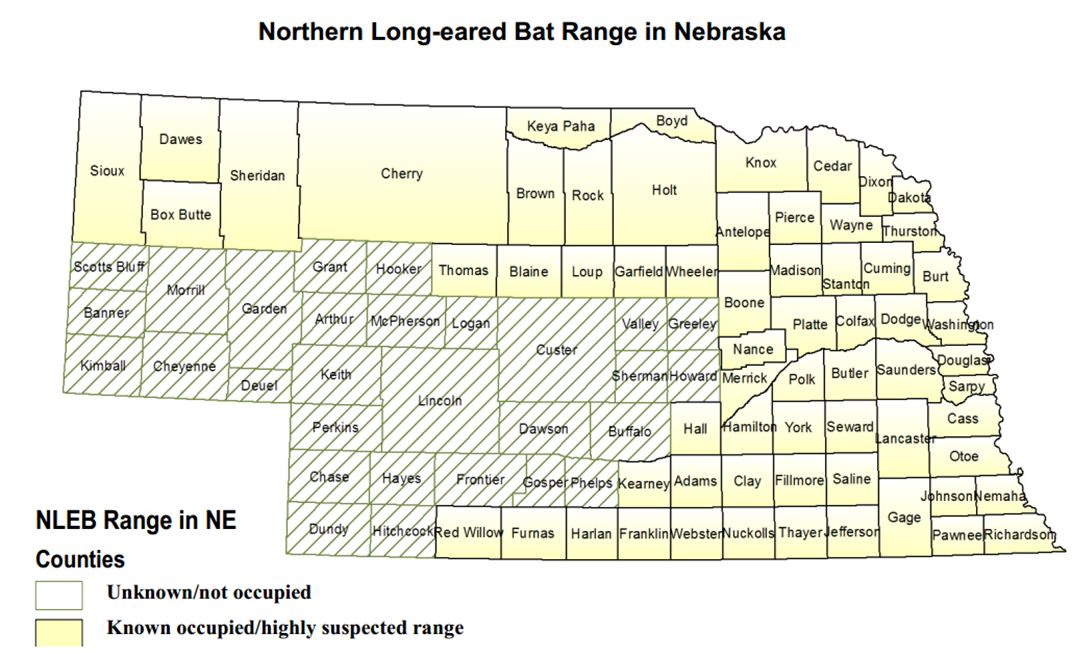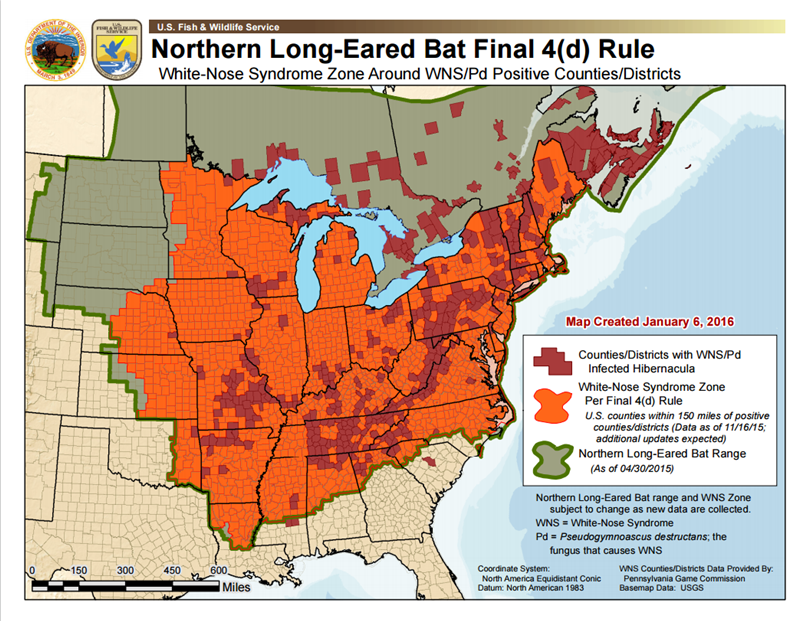The U.S. Fish and Wildlife Service listed the Northern Long-Eared Bat (Myotis septentrionalis), also known as the Northern Myotis, as threatened throughout its range under the Endangered Species Act on May 4, 2015. The Final 4(d) Rule went into effect on February 16, 2016.
Final 4(d) Rule Highlights:
- For all areas within the range of the northern long-eared bat, all purposeful take is prohibited except:
-
- Removal of northern long-eared bats from human structures;
- Defense of human life (e.g., public health monitoring for rabies); or
- Removal of hazardous trees for the protection of human life and property.
- Removal of northern long-eared bats from human structures;
- For areas of the country not affected by white-nose syndrome (i.e., areas outside the white-nose syndrome buffer zone), there are no prohibitions on incidental take.
- For areas of the country impacted by white-nose syndrome, incidental take is prohibited under the following circumstances:
-
- If it occurs within a hibernacula; or
- If it results from tree removal activities and
-
- The activity occurs within 0.25 mile (0.4 km) of a known, occupied hibernacula; or,
- The activity cuts or destroys a known, occupied maternity roost tree or other trees within a 150-foot radius from the maternity roost tree during the pup season from June 1 through July 31.
- The activity occurs within 0.25 mile (0.4 km) of a known, occupied hibernacula; or,
- If it occurs within a hibernacula; or
For the most up-to-date information on the listing, visit the USFWS Northern Long-Eared Bat website.
Pertinent Documents:

